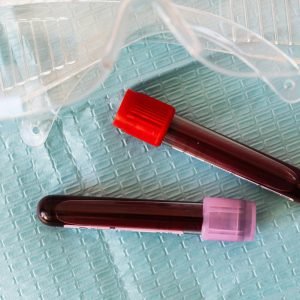
Abstract
Objective To investigate the association between sodium-glucose cotransporter-2 (SGLT-2) inhibitor use and risk of all cause mortality among patients with heart failure with reduced ejection fraction.
Design Linked database study.
Setting National registers in Denmark, July 2020 to June 2023.
Participants Patients with heart failure, aged ≥45 years, with left ventricular ejection fraction ≤40%.
Main outcome measures The primary outcome was all cause mortality comparing initiation and continued treatment with SGLT-2 inhibitors versus continued treatment with other standard-of-care heart failure drugs and non-use of SGLT-2 inhibitors; secondary outcomes were the composite of cardiovascular mortality or admission to hospital with heart failure and its individual components. Hazard ratios were estimated using Cox regression adjusted using inverse probability of treatment weighting based on propensity scores.
Results The study included 6776 patients who started SGLT-2 inhibitors (79% dapagliflozin; 21% empagliflozin) and 14 686 patients who remained on other standard-of-care heart failure drugs and did not use SGLT-2 inhibitors. Most SGLT-2 inhibitor users were male (70%), the mean age was 71.2 (standard deviation 10.6) years, and 20% had type 2 diabetes. During follow-up, 374 deaths occurred among SGLT-2 inhibitor users (incidence rate 5.8 per 100 person years) and 1602 among non-users (8.5 per 100 person years). The weighted hazard ratio for all cause mortality was 0.75 (95% confidence interval 0.66 to 0.85); the weighted incidence rate difference was −1.6 (95% confidence interval −2.5 to −0.8) per 100 person years. Secondary outcomes showed a weighted hazard ratio of 0.94 (0.85 to 1.04) for cardiovascular mortality or hospital admission with heart failure, 0.77 (0.64 to 0.92) for cardiovascular mortality, and 1.03 (0.92 to 1.15) for hospital admission with heart failure. The weighted hazard ratios for all cause mortality were consistent in patients with and without diabetes (0.73 (0.58 to 0.91) and 0.73 (0.63 to 0.85); P=0.99).
Conclusions In this large database study among patients with heart failure with reduced ejection fraction, SGLT-2 inhibitor use was associated with a 25% lower risk of all cause mortality, supporting their effectiveness in routine clinical practice.
Introduction
More than 64 million people worldwide are affected by heart failure, and the prevalence of 1-3% among adults is growing as a result of population ageing.1 Approximately half of all patients with heart failure have reduced ejection fraction. Mortality among this group of patients remains high, with a five year survival rate of only 25% following hospital admission.2
Recently, several new therapeutic options for the treatment of chronic heart failure have emerged, with seminal clinical trials showing significant benefits.3 Sodium-glucose cotransporter-2 (SGLT-2) inhibitors are at the forefront of the recent paradigm shift in drug treatment of type 2 diabetes, with strong evidence of major beneficial effects on heart failure, cardiovascular, and renal outcomes among patients with diabetes. Subsequent trials have firmly shown that agents in this drug class reduce the risk of worsening of heart failure, mortality, and adverse renal outcomes among patients with heart failure with reduced ejection fraction, with findings consistent regardless of whether patients have diabetes.4 In the DAPA-HF trial, treatment with the SGLT-2 inhibitor dapagliflozin resulted in a 26% lower risk of the composite of worsening heart failure or cardiovascular death among patients with heart failure with reduced ejection fraction, compared with placebo.5 In the EMPEROR-Reduced trial, a corresponding 25% reduction was observed with the SGLT-2 inhibitor empagliflozin.6 This evidence prompted the approval of dapagliflozin and empagliflozin for the indication of heart failure with reduced ejection fraction in the EU and US in 2020 and 2021, respectively. In major heart failure guidelines, dapagliflozin and empagliflozin have rapidly been included as part of the standard therapeutic arsenal for all patients with heart failure with reduced ejection fraction, to reduce the risk of hospital admission and death.78 The most recent guidelines for the management of heart failure with reduced ejection fraction recommend a combination of a renin-angiotensin system inhibitor, a β blocker, a mineralocorticoid receptor antagonist, and an SGLT-2 inhibitor indicated for heart failure, to reduce the risk of hospital admission and death.
Solid clinical trial evidence supports the efficacy of SGLT-2 inhibitors, but their effectiveness in broad heart failure populations seen in everyday clinical practice is largely unknown. Clinical trials typically rely on stringent eligibility criteria and homogeneous populations, whereas patients in routine practice are much more heterogeneous, with variable baseline risk of major outcomes and differing levels of concomitant diseases. Using Danish national registers,9 this study investigated the association between use of SGLT-2 inhibitors with an indication for heart failure and the risk of all cause mortality, compared with use of other standard-of-care heart failure drugs and non-use of SGLT-2 inhibitors, among patients with heart failure with reduced ejection fraction.
Methods
Study design
This was a non-interventional database study in Denmark, based on the Danish Heart Failure Registry (DHR) and linked national registers,9 from July 2020 to June 2023. Although SGLT-2 inhibitors received their first approval for the indication of heart failure with reduced ejection fraction regardless of type 2 diabetes in the EU in November 2020, the landmark DAPA-HF trial had already shown significant beneficial effects in 2019,5 prompting the endorsement of SGLT-2 inhibitors for the treatment of heart failure with reduced ejection fraction by major clinical societies.1011
We identified patients with heart failure from the DHR, which includes records of patients with a first time primary diagnosis of heart failure in specialist care (ICD-10 (international classification of diseases, 10th revision) codes: I11.0, I13.0, I13.2, I42.0, I42.6, I42.7, I42.9, I50.0, I50.1, and I50.9).9 All Danish hospital departments treating inpatients or outpatients with incident heart failure are required to report to the DHR. The study included patients aged ≥45 years with a left ventricular ejection fraction of ≤40%.
The primary outcome was all cause mortality. Secondary outcomes included the composite of cardiovascular mortality or hospital admission for heart failure and the individual components of this composite. We did subgroup analyses of the primary outcome according to categories of age, sex, left ventricular ejection fraction, New York Heart Association (NYHA) class, recent hospital admission for heart failure, history of ischaemic heart disease, chronic kidney disease, and type 2 diabetes.
The study used a modified prevalent new user design,12 including patients who started treatment with SGLT-2 inhibitors indicated for heart failure (dapagliflozin and empagliflozin) and patients who remained on standard-of-care drugs for heart failure with reduced ejection fraction and did not use SGLT-2 inhibitors (the comparator group), matched on time since diagnosis of heart failure. We intended this definition of the comparator group to reflect routine heart failure care with non-use of SGLT-2 inhibitors, mimicking the causal contrast of a trial of SGLT-2 inhibitors versus standard of care alone.12
For the SGLT-2 inhibitor group, the index date—the date of start of follow-up—occurred on the date of the first prescription of an SGLT-2 inhibitor following a first time diagnosis of heart failure made in specialist care. For the comparator group of non-users of SGLT-2 inhibitors, we considered the date of each prescription for other standard-of-care heart failure drugs, including renin-angiotensin system inhibitors, β blockers, and mineralocorticoid receptor antagonists, filled following a first time specialist care diagnosis of heart failure with reduced ejection fraction during the study period, to be a potential index date. Anatomic Therapeutic Chemical (ATC) codes used to define the SGLT-2 inhibitor group and the potential comparator index dates are listed in supplementary table A.
Baseline exclusion criteria included a prescription for any SGLT-2 inhibitor at any time before the index date, heart transplant, end stage illness, drug misuse, end stage renal disease or kidney transplantation, nursing home residence, and absence of specialist care contact due to cardiovascular causes in the previous 30 days (to ensure that all patients had the recent opportunity to receive a prescription for an SGLT-2 inhibitor). Definitions are provided in supplementary table B.
For the SGLT-2 inhibitor group, we included all incident users meeting the eligibility criteria. For the comparator group, we selected a single index date for each patient through a matching process based on the distribution of time since diagnosis of heart failure observed in the SGLT-2 inhibitor group. This approach served to balance the two treatment groups on time since diagnosis of heart failure at baseline, to align baseline characteristics. The process for selecting a single index date from the potentially multiple index dates per patient in the comparator group is detailed in the supplementary methods.
Data sources
We obtained data on the use of study drugs from the National Prescription Register, which holds comprehensive information on all pharmacy dispensations in Denmark, including dates and ATC codes.13 The primary outcome was based on information from the Civil Registration System,14 which holds practically complete coverage of vital status for all residents of Denmark. Data on cardiovascular death and hospital admission with heart failure came from the Danish Register of Causes of Death (CDR) and primary diagnoses at hospital admissions as recorded in the National Patient Register (NPR), respectively.1516 The NPR comprehensively captures all hospital contacts, with records of the date, setting, and discharge diagnoses, categorised under the ICD-10. The CDR compiles data from death certificates, including physician determined causes of death for all deaths in Denmark, categorised according to ICD-10. We defined the date for the composite outcome as the date of the first occurrence of any component of the outcome. Definitions of all outcomes are provided in supplementary table C.
We obtained information on covariates from multiple data sources: heart failure characteristics, including left ventricular ejection fraction and NYHA classification, came from the DHR; demographic information came from the Civil Registration System; educational attainment came from Statistics Denmark; medical history, procedures, and healthcare utilisation came from the NPR; prescription drug use came from the prescription register; and measurements of estimated glomerular filtration rate and N-terminal pro-hormone of brain natriuretic peptide (NT-proBNP) came from the Danish Register of Laboratory Results for Research.17 Covariate definitions are provided in supplementary table D. We selected the covariates on the basis of their known or expected associations with both the treatment and outcome or the outcome alone.
Statistical analysis
We defined treatment status by using a “per protocol” analytical approach, in which we considered each prescription to provide 180 days of treatment coverage. We assumed patients in both treatment groups to remain on treatment for as long as a new prescription was filled before the end of the 180 day period from the previous prescription. We considered patients who did not refill within this timeframe to have ended treatment. Study follow-up started on the index date and ended on the date of an outcome event or censoring (due to end of study period, death, emigration, or end of treatment), whichever occurred first. For the patients in the comparator group, an additional censoring criterion was the prescription of any SGLT-2 inhibitor during follow-up.
To account for differences in baseline characteristics between the treatment groups, we adjusted the results by using inverse probability of treatment weighting with stabilised weights based on propensity scores,18 estimated using the variables in table 1, table 2, and table 3 as predictors. For each patient, we calculated the weight as the inverse of the propensity score for the treatment group and as the inverse of 1 minus the propensity score for the control group. Stabilisation was achieved by multiplying each weight by the marginal probability of receiving the treatment. We excluded patients with a propensity score outside the overlapping area of the distribution for both treatment groups. The estimated weights were truncated at the first and 99th centiles of the overall weight distribution to mitigate the potential influence of large weights.19 We assessed the balance of baseline covariates by using standardised mean differences; we considered covariates to be well balanced if the standardised mean difference was <0.1.
Baseline demographic and lifestyle characteristics before and after propensity score weighting. Values are numbers (percentages) or percentages unless stated otherwise
Baseline heart failure and renal function characteristics before and after propensity score weighting. Values are numbers (percentages) or percentages unless stated otherwise
Baseline medical history, healthcare utilisation, and prescription use before and after propensity score weighting. Values are numbers (percentages) or percentages unless stated otherwise
We used proportional hazards regression to estimate the risk of the primary and secondary outcomes associated with use of SGLT-2 inhibitors, compared with non-use. The underlying time scale was days since the index date. To consider non-independence between observations due to weighting, we calculated the variance of the proportional hazards regression models by using the robust sandwich estimator. We used weighted Poisson regression to estimate the absolute rate difference. To correct for non-independence due to weighting, we calculated the variance by using generalised estimating equations.
For each subgroup analysis, we estimated a separate propensity score and conducted weighting within the subgroup. Definitions of all subgroups are provided in supplementary table E. We assessed differences between subgroups by use of the Wald test for homogeneity, with a P<0.05 considered significant.
Missing values on education, NYHA classification, baseline estimated glomerular filtration rate, mean estimated glomerular filtration rate in the previous 365 days, alcohol consumption, and smoking status (the covariates with missing values) were handled by use of a missing value category.20 We used SAS software version 9.4 for the statistical analyses.
We did several sensitivity analyses for the primary outcome. Firstly, whereas the main analysis followed a per protocol approach, a sensitivity analysis used a modified intention-to-treat approach in which patients were not censored at the end of treatment. Secondly, as patients in the main analysis by design were censored on crossover only from the comparator group to SGLT-2 inhibitors (but not vice versa), inverse probability of censoring weighting was applied.21 We used this method to assess the potential effect of differential or informative censoring, aiming to balance the population according to treatment and censoring selection factors that might influence the results. Thirdly, owing to the strong prognostic value of NT-proBNP for mortality in heart failure,7 we further analysed the primary outcome with an adjustment for NT-proBNP concentrations recorded in the previous 180 days. This variable was included in the propensity score model, categorised as normal/mildly elevated versus severely elevated NT-proBNP, defined in alignment with the European Society of Cardiology guidelines for diagnosis of acute heart failure.7 As NT-proBNP was available only for a subset (41%) of the study population, we did this sensitivity analysis on a complete case basis, relying solely on patients with NT-proBNP measurements in the previous 180 days.
Patient and public involvement
The study was conducted using anonymised nationwide register data, which inherently limits direct patient and public involvement. Data protection regulations further restricted our ability to directly involve patients in the study’s design, conduct, or interpretation. Although we strongly support patient and public engagement, neither the necessary infrastructure nor the specific funding was available to facilitate the involvement of patients in the research process.
Results
After we applied the exclusion criteria, 6778 patients who started treatment with SGLT-2 inhibitors and 14 702 patients who remained on other standard-of-care-drugs for heart failure with reduced ejection fraction and did not use SGLT-2 inhibitors were included (fig 1). Following propensity score estimation (odds ratios from the propensity score model are shown in supplementary table F) and weighting, the study population included 6776 users and 14 686 non-users of SGLT-2 inhibitors. The treatment groups were well balanced on all measured characteristics after weighting (table 1; table 2; table 3), with a mean stabilised weight of 0.99 and a maximum stabilised weight of 2.72 following truncation. Most SGLT-2 inhibitor users were male (70%), the mean age was 71.2 (standard deviation 10.6) years, and 20% had type 2 diabetes. Among the patients in the SGLT-2 inhibitor group, 5366 (79%) started treatment with dapagliflozin and 1410 (21%) with empagliflozin.
Inclusion of initiators and non-users of sodium-glucose cotransporter-2 (SGLT-2) inhibitors. SGLT-2=sodium-glucose cotransporter-2. *Potential comparator index dates were prescription dates for standard-of-care heart failure drugs not including SGLT-2 inhibitors. †Patients could be excluded for multiple reasons
In the primary analysis, the median duration of treatment was 0.8 (interquartile range 0.5-1.4) years for the SGLT-2 inhibitor group and 1.1 (0.3-2.3) years for the comparator group. Figure 2 shows the weighted cumulative incidence curve for the primary outcome of all cause mortality. During follow-up, 374 deaths occurred among SGLT-2 inhibitor users (incidence rate 5.8 per 100 person years) and 1602 among non-users of SGLT-2 inhibitors (8.5 per 100 person years). Treatment with SGLT-2 inhibitors was associated with significantly lower risk of all cause mortality (inverse probability of treatment weighted hazard ratio 0.75, 95% confidence interval (CI) 0.66 to 0.85). In terms of weighted absolute risk difference, use of SGLT-2 inhibitors was associated with 1.6 (95% CI 0.8 to 2.5) fewer deaths per 100 person years, compared with non-use.

Weighted (inverse probability of treatment weighting according to propensity score) cumulative incidence curve for primary outcome of all cause mortality. CI=confidence interval; SGLT-2=sodium-glucose cotransporter-2. Cumulative incidence curve was truncated at 2 years owing to decreasing numbers of patients at risk and outcome events. Maximal follow-up in study was 3 years
Table 4 shows the results for the secondary outcomes; the weighted cumulative incidence curves are shown in supplementary figures A-C. Use of SGLT-2 inhibitors was associated with a significantly lower risk of cardiovascular mortality (weighted hazard ratio 0.77, 95% CI 0.64 to 0.92) but not of the composite of cardiovascular mortality or hospital admission due to heart failure (0.94, 0.85 to 1.04) or hospital admission due to heart failure alone (1.03, 0.92 to 1.15).
Results for secondary outcomes
Figure 3 shows the subgroup analyses for the primary outcome. Although the rate of mortality varied markedly across levels of several subgroups, we observed no statistically significant interaction for any of the subgroups. The weighted hazard ratios for all cause mortality were similar among patients with (0.73, 95% CI 0.58 to 0.91) and without (0.73, 0.63 to 0.85) type 2 diabetes (P=0.99).

Results of subgroup analyses for primary outcome. CI=confidence interval; HF=heart failure; HR=hazard ratio; IHD=ischaemic heart disease; LVEF=left ventricular ejection fraction; NYHA=New York Heart Association; py=person years; SGLT-2=sodium-glucose cotransporter-2. *Patients with missing information on NYHA category were not included in this subgroup analysis
In sensitivity analyses of the primary outcome, the results were similar to those of the main analysis when we used a modified intention-to-treat approach (weighted hazard ratio 0.80, 95% CI 0.71 to 0.90; incidence curve in supplementary figure D), when we used inverse probability of censoring weighting (0.78, 0.69 to 0.88), and with additional adjustment for NT-proBNP (0.68, 0.57 to 0.82; incidence curve in supplementary figure E). The results of the sensitivity analyses are shown in supplementary table G.
Discussion
In this large scale database study of patients with heart failure with reduced ejection fraction, use of SGLT-2 inhibitors was associated with a statistically significant 25% lower risk of all cause mortality compared with non-use, showing the effectiveness of SGLT-2 inhibitors in the real world clinical setting. The magnitude of the association was consistent across all investigated subgroups, including those with and without type 2 diabetes. In addition, treatment with SGLT-2 inhibitors was associated with a 23% significantly lower risk of the secondary outcome of cardiovascular mortality, but not of the secondary composite outcome of cardiovascular mortality or hospital admission with heart failure or of hospital admission with heart failure alone.
Comparison with existing evidence
In the two landmark randomised controlled trials investigating dapagliflozin and empagliflozin for heart failure with reduced ejection fraction, both studies showed a significant 25% reduction in the primary composite outcome of cardiovascular death or worsening heart failure compared with placebo. The DAPA-HF trial observed a statistically significant reduction in both all cause mortality (hazard ratio 0.83, 95% CI 0.71 to 0.97) and cardiovascular mortality (0.82, 0.69 to 0.98), and the EMPEROR-Reduced trial showed similarly beneficial, albeit not statistically significant, trends (hazard ratio 0.92 (95% CI 0.77 to 1.10) for all cause mortality and 0.92 (0.75 to 1.12) for cardiovascular mortality). This study corroborates these findings, showing a significantly lower risk of both all cause mortality and cardiovascular mortality with SGLT-2 inhibitors. Furthermore, consistent with observations in the trials, the effectiveness of SGLT-2 inhibitors in this study was similar in patients with and without type 2 diabetes. Conversely, this study did not find an association between use of SGLT-2 inhibitors and reduced risk of hospital admission with heart failure, which contrasts with previous randomised controlled trials. In a post hoc analysis, we observed a similar result when we used the broader outcome of cardiovascular hospital admission (weighted hazard ratio 1.02, 95% CI 0.94 to 1.10). Similar discrepancies between database studies and trial data concerning the risk of hospital admission among patients with heart failure have previously been noted and may be attributed to variations in coding practices.2223 Specifically, the strict and rigorous event adjudication typical in clinical trials may contrast with diagnostic coding in routine clinical practice, making direct comparisons difficult. Nevertheless, the positive predictive values for first time hospital admission and readmission for heart failure, as registered in the Danish National Patient Register, were both 76% in a validation study.24
To our knowledge, no previous large scale database studies have investigated the effectiveness of SGLT-2 inhibitors on mortality among patients with heart failure with reduced ejection fraction, with or without type 2 diabetes. The results from our study expand the available evidence through robust analyses of a well characterised set of patients with heart failure, including information on left ventricular ejection fraction, NYHA class, and renal function. This study complements previous randomised controlled trials by extending the evidence to a broad heart failure population in routine clinical practice, offering valuable insights into the effectiveness of SGLT-2 inhibitors across diverse patient groups. In terms of clinical impact, the results support current guidelines recommending SGLT-2 inhibitors for all patients with heart failure with reduced ejection fraction.78
Strengths and limitations of study
This study has several strengths. Firstly, the use of high quality data sources, including a comprehensive, nationwide heart failure registry, allowed for reliable identification of patients with heart failure with reduced ejection fraction and their outcomes. Moreover, these data sources provided key clinical measures of heart failure, such as left ventricular ejection fraction, NYHA classification, and renal function, which we took into account through propensity score weighting. Additional measures to enhance internal validity included the requirement for a recent cardiovascular visit, ensuring that all patients had a recent opportunity to start SGLT-2 inhibitor treatment while also confirming recent clinical assessment of the included patients. Finally, the use of a modified prevalent new user design, comparing patients who started and continued SGLT-2 inhibitors with those who remained on standard-of-care heart failure drugs without the addition of SGLT-2 inhibitors, mimicked the causal contrast of a placebo controlled trial12; this design allowed for a direct assessment of the added benefit of SGLT-2 inhibitors in heart failure with reduced ejection fraction, compared with standard of care alone.
We acknowledge several potential limitations. Firstly, we used prescription fills as a surrogate for actual treatment, but these may not always equate to adherence, potentially leading to exposure misclassification. Assuming that misclassification was non-differential, this would likely bias the results towards the null. Although the main analysis used a per protocol approach, sensitivity analysis using an observational analogue of modified intention to treat led to similar results. Secondly, as patients crossing over from the comparator group to SGLT-2 inhibitors were censored (whereas crossover to the comparator group was not possible), differential censoring could potentially influence the findings. However, the results from sensitivity analyses with inverse probability of censoring weighting suggested no material effect on the results. Thirdly, although the sample size in the main analysis of the primary outcome was sufficient to detect even small differences between the study drugs, the statistical precision for some subgroup analyses was limited, thus restricting the ability to detect less pronounced differences in treatment effects across subgroups. Fourthly, excluding patients without recent specialist care contact may have limited generalisability but ensured that the results are representative of patients in active heart failure management, who could be considered for SGLT-2 inhibitor treatment. Fifthly, not all patients had a recent measurement of NT-proBNP. We explored the effect of NT-proBNP concentrations on treatment outcomes in a sensitivity analysis, which we conducted on a complete case basis; the results of this analysis aligned with the results of the main analysis. Other information not available included blood pressure control and non-drug interventions such as exercise and weight management. Thus, despite multiple measures to maximise internal validity, as for all non-randomised studies, unmeasured confounding cannot be ruled out.
Conclusions
This database study showed that the use of SGLT-2 inhibitors was significantly associated with lower risk of all cause and cardiovascular mortality in patients with heart failure with reduced ejection fraction. These results support the benefits of SGLT-2 inhibitors observed in randomised controlled trials and provide novel and important data on their effectiveness in real world clinical settings and across key clinical subgroups, including patients with and without diabetes.







